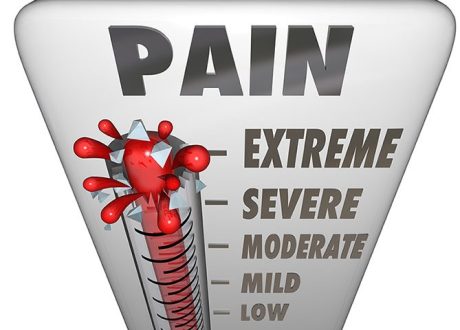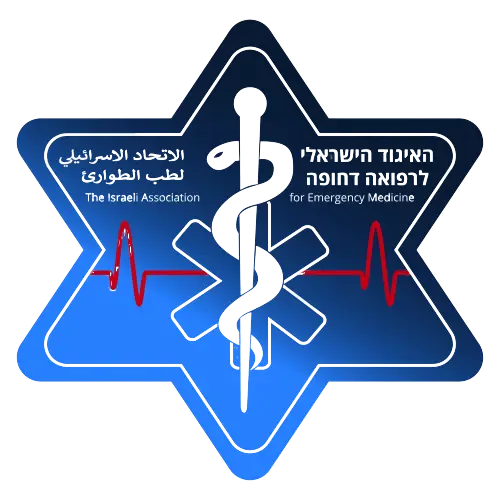In this ECG Cases blog we review 10 patients who presented with cocaine-associated chest pain. How would the ECG change your management?
Written by Jesse McLaren; Peer Reviewed and edited by Anton Helman, December 2022
10 patients presented with cocaine-associated chest pain. How does the ECG change your management?
Case 1: 45 year old with chest pain after smoking crack




Case 5: 60 year old with chest pain after alcohol and crack, brought by EMS as code STEMI and given aspirin. First ECG from EMS and repeat at triage, then repeat with 15 lead



Case 6: 60yo with chest pain 4 hours after cocaine. First ECG with pain and repeat with pain resolution after lorazepam, aspirin, and nitroglycerine.


Case 7: 40 year old with chest pain and vomiting after cocaine, presented the next pain painfree but feeling weak

Case 8: 40yo with chest pain and shortness of breath after cocaine. ECG from 4 years prior and new ECG


Case 9: 70 year old prior CABG with sudden severe chest pain 2 hours after cocaine

Case 10: 60 year old prior CABG with hours of chest pain and shortness of breath after cocaine. Serial ECG the same with chest pain and with resolution of chest pain after lorazepam/aspirin/nitro

Cocaine, occlusion and reperfusion
Cocaine causes a variety of cardiovascular complications.[1] Chronically, it can accelerate atherosclerosis and cause cardiomyopathy, especially with coingestants including alcohol and tobacco. Acutely the sympathomimetic can cause myocardial ischemia through increased oxygen demand (tachycardia, hypertension and increased contractility), reduced oxygen supply (coronary vasoconstriction), and increased platelet aggregation and thrombus formation. The adrenergic surge can also cause arrhythmias (in combination with cocaine’s sodium-channel blocking properties), and dissection of the aorta or coronary arteries. The effects of cocaine occur rapidly, can be prolonged or intensified with co-ingestants, and there can be delayed onset or recurring effects from its metabolites. Different routes of administration can also produce specific complications: acute lung injury or pneumomediastinum from inhalation, or endocarditis from injection.
Chest pain is the most frequent complaint in ED patients presenting after cocaine use, often accompanied by shortness of breath and diaphoresis. But the majority don’t have myocardial infarction: in a nationwide sample of patients with non-pleuritic chest pain after cocaine use, 9.7% had myocardial infarction and 3.8% required percutaneous coronary intervention.[2] Recommendations for treating cocaine-associated chest pain prioritize benzodiazepines to treat the sympathetic surge.[1,3] This can be followed by targeting the other pathophysiology: nitroglycerine for coronary vasoconstriction, and aspirin for anti-platelet activity. The lorazepam/nitroglycerin combination provides relief in cocaine-associated chest pain even for those patients who have MI excluded.[4]
The next step on the management algorithm after symptomatic treatment is ECG interpretation[1,3], but the literature is limited. The Cocaine Associated Chest Pain Study Group study found an ECG sensitivity of only 35%, but this 1994 study was based on MI diagnosed by CK-MB without angiography.[5] More recent studies have suggested limited utility of the ECG for “obstructive CAD” but this was defined as any lesion > 70% which does not differentiate between acute occlusive and stable non-occlusive lesions.[6] The ECG is not supposed to identify any troponin leak from demand ischemia or any pre-existing coronary artery disease, but is very useful to identify acutely occluded arteries and those which have reperfused and are at risk of re-occlusion. But this requires looking for signs of occlusion or reperfusion, and differentiating them from other causes, and going beyond STEMI criteria. There are 3 important scenarios of ECGs with cocaine-associated chest pain:
- Chest pain with false positive STEMI
Patients with cocaine-associated chest pain are at risk for false positive STEMI and unnecessary cath lab activation.[7] This includes younger patients with early repolarization[8], patients with LVH, or Brugada pattern from cocaine’s sodium channel blocking properties.[9] Differentiating these requires looking beyond ST segment elevation and other features: early repolarization often has tall voltages with J waves, without any QRS-ST-T abnormalities; LVH has tall left-sided voltages and strain pattern with secondary T wave changes; and Brugada pattern has RsR’ with coved or saddleback ST elevation in V1-2.
- Chest pain with OMI, including false negative STEMI
STEMI criteria miss many Occlusion MI, and these STEMI(-)OMI are at risk of delayed reperfusion. For example, a study on initial ECGs in patients with cocaine-associated chest pain showed a “normal” ECG that developed STEMI criteria 5 hours later, but the “normal” ECG they showed is diagnostic of inferoposterior OMI.[10] STEMI(-)OMI are also at risk for unnecessary investigations that delay reperfusion: the vast majority of Occlusion MIs are not caused by aortic dissection, and the vast majority of aortic dissections are not caused by cocaine[11], so delaying angiography for CT in a patient presenting with cocaine chest pain and an ECG diagnostic of OMI will lead to delayed reperfusion in the vast majority of cases. The other common differential for cocaine-associated chest pain is coronary vasospasm. This might be assumed from a patient whose pain resolves after nitro and lorazepam, with a normal ECG. But any refractory pain or ECG showing ongoing signs of occlusion, including STEMI(-)OMI, is from acute occlusion until proven otherwise.
- Resolved chest pain with reperfusion
If patients with cocaine-associated chest pain have resolution of symptoms, the ECG might show signs of reperfusion indicating risk of re-occlusion, which is also missed by STEMI criteria. This includes both anterior “Wellen’s waves” from LAD reperfusion, but also reperfusion T wave inversion in the inferior or lateral leads, or tall T waves from posterior reperfusion. Signs of reperfusion in resolved cocaine-associated chest pain could be secondary to resolved coronary vasospasm, but this remains a diagnosis of exclusion given the accelerated atherosclerosis in patients who use cocaine, especially if troponin is elevated. An angiographic study on patients with cocaine-associated chest pain found significant underlying coronary disease in 77% of those with elevated troponin but only 18% of those with normal troponin,[12] so troponin elevation in cocaine-associated chest pain can’t be dismissed as vasospasm. It’s been suggested that a modified HEART score add cocaine use to more accurately risk stratify patients with cocaine-associated chest pain[13], and ECG signs of reperfusion can also identify high-risk patients. Given the risk of future cardiac complications, both chronic and acute, ED visits for cocaine-associated chest pain are important but underutilized opportunities to link patients with addiction medicine follow up.[14]
Back to the cocaine chest pain cases
Case 1: early repolarization, false positive STEMI

- Heart rate/rhythm: normal sinus
- Electrical conduction: normal
- Axis: normal
- R-wave progression: delayed
- Tall/small voltages: normal voltages
- ST/T changes: mild concave inferior ST elevation associated with J waves, no hyperacute T waves, and no reciprocal change in aVL (which makes inferior OMI highly unlikely)
Impression: early repolarization. The patient had cath lab activation, with normal coronaries and normal troponin level, and discharge ECG was the same

- H: normal sinus
- E: normal conduction
- A: normal axis
- R: normal R wave progression
- T: normal voltages
- S: inferolateral concave ST elevation with J waves like early repolarization, but the ST elevation is nearly 5mm in V5, and there is inappropriate anterior ST depression that excludes early repolarization
Impression: concerning for posterolateral OMI. Treated with aspirin and cath lab activated: no acute thrombus but apical hypokinesis and peak troponin 16,000ng/L. Diagnosed as vasospasm vs spontaneously reperfused thrombus, treated with dual antiplatelets and referred to cardiology and addiction medicine follow up. Discharge ECG had resolution of anterior ST depression and excessive lateral ST elevation, and posterior reperfusion T wave inversion (tall anterior T waves):


- H: normal sinus
- E: new RBBB
- A: normal axis
- R: anterior Q
- T: normal voltages
- S: concordant anterior ST elevation and hyperacute T wave, with inferior reciprocal change
Impression: proximal LAD occlusion. Treated with aspirin, nitro and cath lab activation: 100% proximal LAD occlusion at the location of the stent. First troponin undetectable and peak only 5,000 ng/L due to rapid reperfusion. Discharge ECG had anterior reperfusion T wave inversion:


- H: normal sinus
- E: normal conduction
- A: normal axis
- R: normal R ave
- T: normal voltages
- S: inferior ST elevation and hyperacute T waves with reciprocal STD/TWI in aVL, anterior STD V2-4 and V6 ST elevation and hyperacute T wave
Impression: infero-postero-lateral STEMI(+)OMI. Given aspirin and cath lab activated: 100% circumflex occlusion. Discharge ECG had infero-postero-lateral reperfusion T wave inversion

Case 5: from STEMI(+)OMI to STEMI(-)OMI, with false cath lab cancellation



- H: borderline sinus tach, PVC in first ECG
- E: normal conduction
- A: normal axis
- R: normal R wave progression
- T: normal voltages
- S: first ECG had inferior STEMI, reciprocal change in aVL and precordial STDmaxV1-4. Repeat 12 and then 15 leads were both “STEMI negative” but had ongoing STE/hyperacute T in III wiht reciprocal change in I/aVL and STD in V2
Impression: inferoposterior OMI, first ECG STEMI(+) and repeat STEMI(-). Because of resolution of STEMI criteria the chest pain was attribute to vasospasm and the patient was admitted for non-urgent angio, but the repeat 12 and 15 lead ECGs were both still diagnostic of ongoing Occlusion MI. Angiogram 12 hours later found 100% RCA occlusion, and troponin rose from 200 to 100,000 ng/L. Discharge ECG showed infero-postero-lateral reperfusion TWI.

Case 6: LAD reperfusion at risk of re-occlusion


- H: normal sinus
- E: normal
- A: normal
- R: Q wave and fragmented QRS in V2, tiny Q that develops into full Q in V3
- T: normal voltages
- S: initial TWI in aVL then development of biphasic T wave in V2
Impression: LAD reperfusion after loss of R wave (i.e. not “Wellens”). First trop 200ng/L (normal <16 in females and <26 in males). Admitted for angiogram that found 90% LAD lesion that was stented. Peak trop 2000ng/L and discharge ECG showed ongoing anterior Q waves and deeper reperfusion T wave inversion:

Case 7: RCA reperfusion at risk of re-occlusion

- H: normal sinus
- E: normal conduction
- A: normal axis
- R: normal R wave progression
- T: normal voltages
- S: TWI in II/III/aVF, mild STD in V3-4 and T wave inversion in V6
Impression: resolved chest pain with infero-postero-lateral reperfusion. First troponin 3,000 and admitted as “NSTEMI” for delayed angiogram: 100% RCA occlusion perfused by collaterals. RCA stented and no further rise in troponin. Discharge ECG had persisting reperfusion T wave inversion:

Case 8: LVH with vasospasm, diagnosed after resolution of chest pain and ECG changes, and OMI ruled out


- H: normal sinus
- E: normal conduction
- A: normal axis
- R: old anterior Q wave
- T: increasing voltages from worsening LVH
- S: inferolateral STD/TWI discordant and proportional to large voltages. Mild STE aVL/V2 and tall T wave in V2
Impression: increasing inferolateral STD/TWI with STE and tall T wave in V2, which could be from worsening LVH vs OMI vs spasm. Treated with aspirin, lorazepam and nitro, with resolution of chest pain and ST changes.

Small troponin elevation from 150 to 200 ng/L, angiogram normal, discharge ECG the same, and diagnosed with coronary vasospasm.
Case 9: vasospasm diagnosed after aortic dissection and OMI ruled out

- H: normal sinus with PVCs
- E: normal conduction
- A: normal axis
- R: delayed R wave progression
- T: normal voltages
- S: nonspecific ST/T changes: TWI in V2 could be from high lead placement (biphasic P) and TWI isolated in III can be normal finding
Impression: nondiagnostic ECG. Patient had benzodiazepine, aspirin and nitro for the chest pain, stat CT chest ruled out aortic dissection, repeat ECG was unchanged and pain resolved. Serial troponin rose from 125 to 2000ng/L and admitted for angiogram, which showed patent bypass grafts. Peak troponin 7,000 and diagnosed with coronary vasospasm. Referred for cardiology and addiction medicine follow up
Case 10: cocaine-associated chest pain, resolved with treatment and MI ruled out

- H: normal sinus
- E: normal conduction
- A: normal axis
- R: Q in V2
- T: normal voltages
- S: tall T waves in V2-3
Impression: initially concerning for hyperacute T waves in V2-3, but serial ECG was unchanged from pain to resolution of pain after lorazepam/aspirin, and serial troponin was negative. Patient discharge with cardiology and addiction medicine follow up
Take home points on cocaine chest pain ECG interpretation
- Patients with cocaine-associated chest pain require benzodiazepines +/- nitroglycerine for symptom relief, aspirin and ECG to look for signs of occlusion and reperfusion
- Chest pain + ST elevation: consider false positive STEMI including early repolarization, LVH and Brugada-pattern
- Chest pain and “STEMI negative”: beware STEMI(-)OMI including subtle ST elevation, hyperacute T waves, reciprocal change, and refractory ischemia
- Resolved chest pain: look for reperfusion T wave inversion, at risk for reocclusion
References for ECG Cases 38 – ECG Interpretation in cocaine chest pain
- Havakuk O, Rezkalla S, Kloner R. The cardiovascular effects of cocaine. JACC 2017;70(1):101-13
- Sami F, Chan WC, Acharya P, et al. Outcomes in patients with history of cocaine use presenting with chest pain to the emergency department: insights from the Nationwide Emergency Department Sample 2016-2018. J Am Coll Emerg Physicians Open 2022 Feb;3(1):e12618
- Management of cocaine-associated chest pain and myocardial infarction: a scientific statement from the American Heart Association acute cardiac care committee of the Council on Clinical Cardiology. Circ 2008 Mar 17;117:1897-1907
- Honderick T, Williams D, Seaberg D, et al. A prospective, randomized, controlled trial of benzodiazepines and nitroglycerine or nitroglycerine along in the treatment of cocaine-associated acute coronary syndromes. Am J Emerg Med 2003;21(1): 39-42
- Hollander JE, Hoffman RS, Gennis P, et al.; Cocaine Associated Chest Pain (COCHPA) Study Group Prospective multicenter evaluation of cocaine-associated chest pain. Acad Emerg Med. 1994;1(4):330–339
- Mohamad T, Niraj A, Farah J, et al. Spectrum of eletrocardiographic and angiographic coronary artery disease findings in patients with cocaine-associated myocardial infarction. Cor Art Dis 2009, 20:332-336
- Ifedili I, Bob-Manuel T, Kadire SR, et al. Cocaine-positivity in ST-elevation myocardial infarction: a true of false association. Perm J 2019;23:18-048
- Hollander J, Lozano M, Fairweather P, et al. ‘Abnormal’ electrocardiograms in patients with cocaine-associated chest pain are due to ‘normal’ variants. J of Emerg Med 1994;12(2):199-205
- Littman L, Monroe M, Svenson R. Brugada-type electrocardiographic pattern induced by cocaine. Mayo Clin Proc 2000;75:845-849
- Quianzon CCL, Quade L, Sawon I, et al. The utility of the initial electrocardiogram in predicting aute coronary events in current cocaine users with chest pain the emergency department. J Community Hosp Intern Med Perspect 2011;1(1):10.3402
- Dean JH, Moznicki EM, O’Gara P, et al. Cocaine-related aortic dissection: lessons from the International Registry of Acute Aortic Dissection. Am J Med 2014;127:878-885
- Kontos MC, Jesse RL, Tatum JL, et al. Coronary angiographic findings in patients with cocaine-associated chest pain. J of Emerg Med 2003;24(1):9-13
- Modified HEART score to optimize risk stratification in cocaine-associated chest pain. Am J Emerg Med 2021 Sept;47:307-308
- Fortney JC, Tripathi SP, Walton MA, et al. Patterns of substance abuse treatment seeking following cocaine-related emergency department visits. J Behav Health Serv Res 2011 Apr;38(2):221-233









